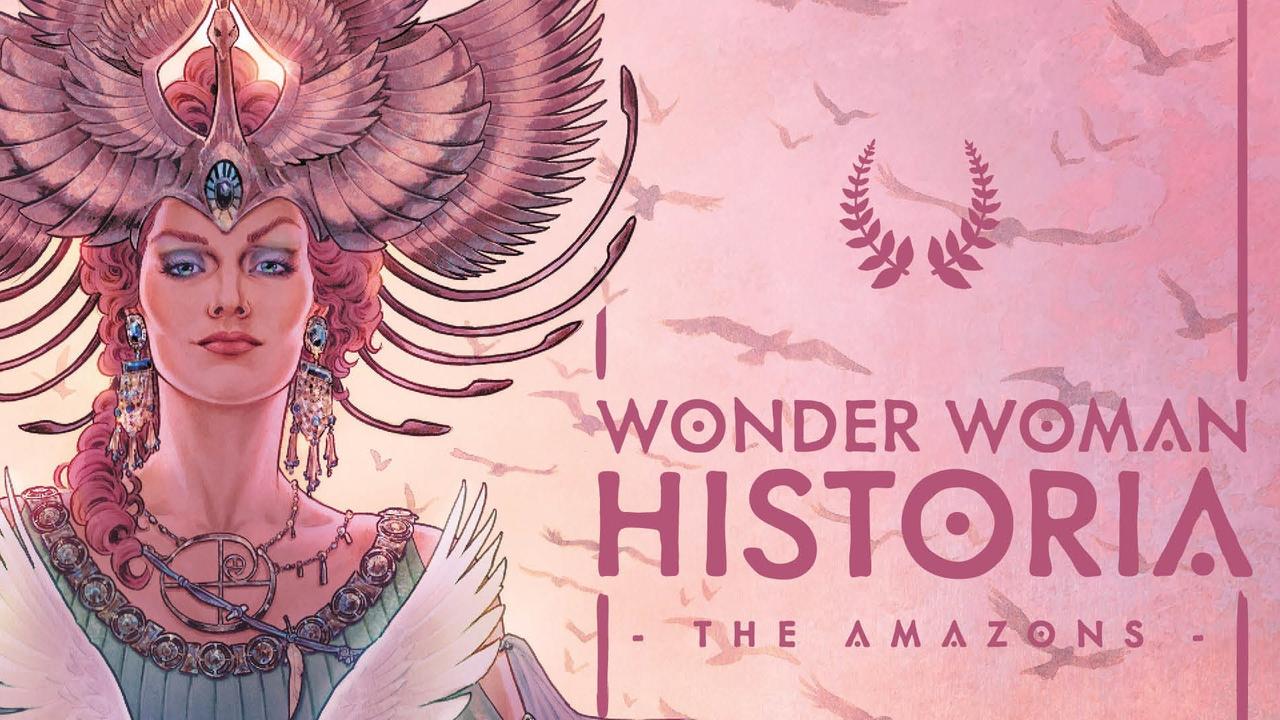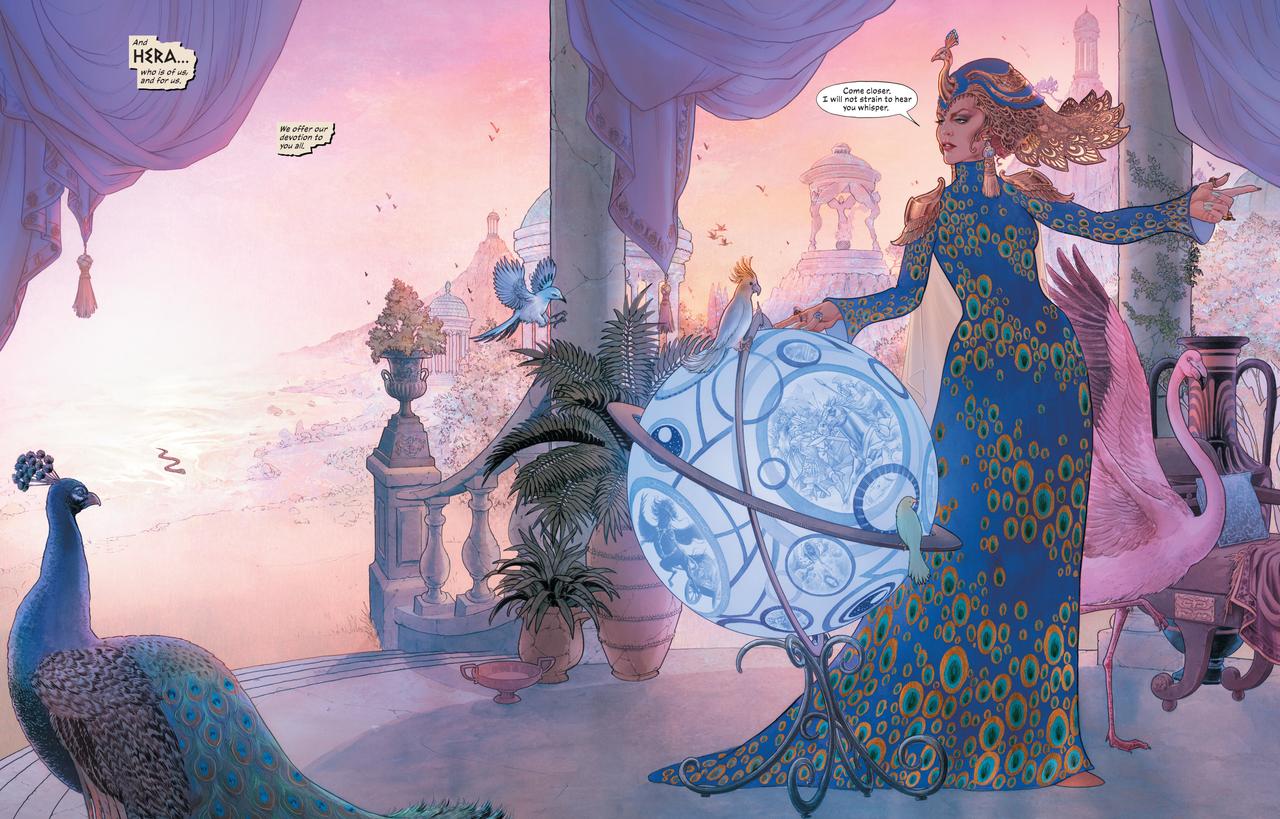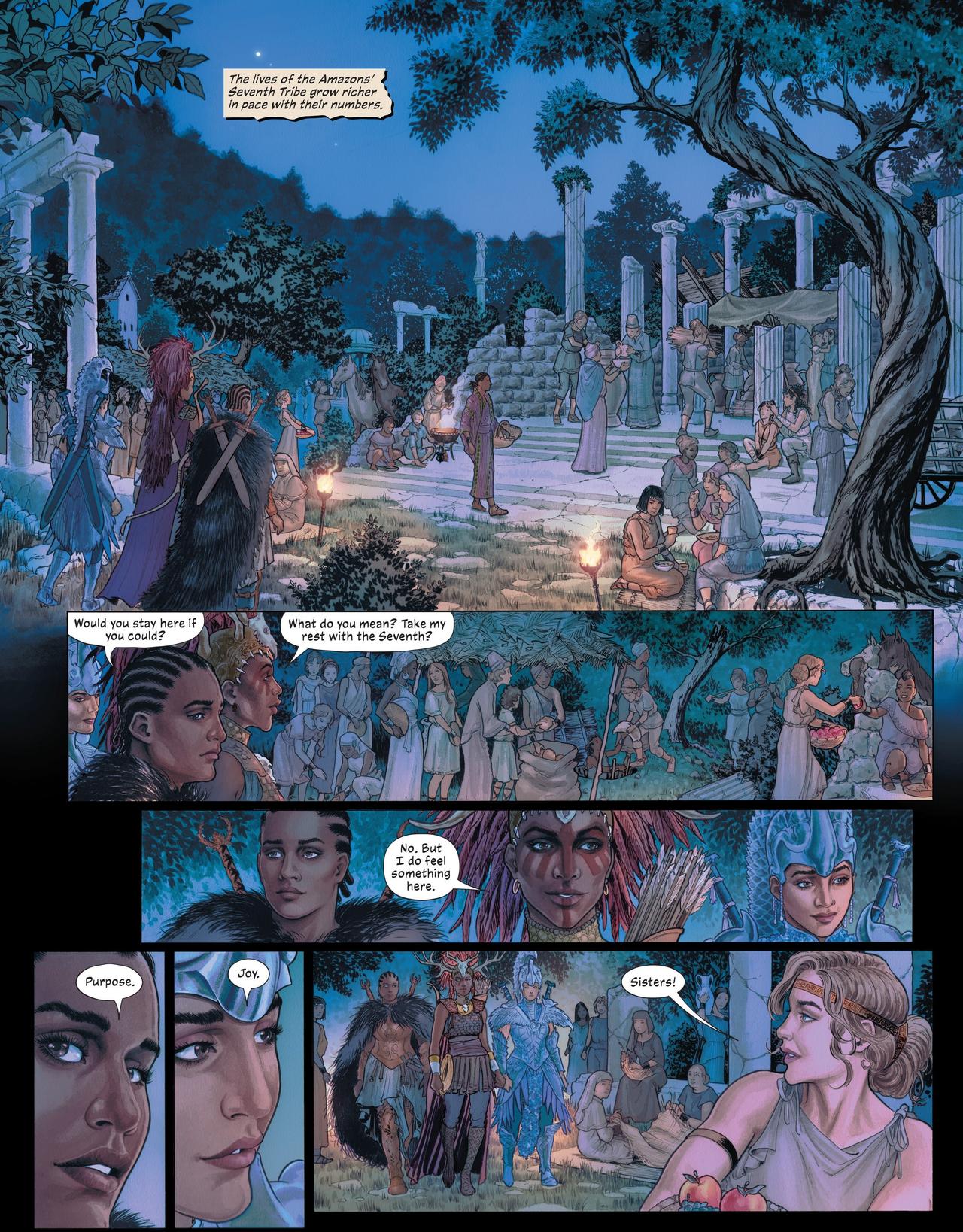If you click on a link and make a purchase we may receive a small commission. Read our editorial policy.
Mythology redefined: A look at Wonder Woman Historia
Wonder Woman Historia: The Amazons has come to a close, completing one of the most ambitious and epic DC Black Label stories. Here’s how the story expands the Wonder Woman mythos.

One of the first titles announced for DC Black Label in 2018, DC’s publishing imprint oriented towards more mature readers, with stories often outside of the main DC Universe’s continuity was Wonder Woman Historia: The Amazons. Written by Kelly Sue DeConnick, each installment of the three-issue miniseries is illustrated by a different superstar artist, with Phil Jimenez kicking things off, Gene Ha bringing the middle chapter to life, and Nicola Scott closing out the initial leg of this epic tale. As its title suggests, Wonder Woman Historia goes into details surrounding the origins of the Amazons and their leader Queen Hippolyta, exploring their culture and their complicated dynamic with the Ancient Greek pantheon of classical deities.
With Wonder Woman Historia now complete, here is a look at how the critically acclaimed series helps redefine the mythology behind the DC icon for modern audiences, how it positions the Amazons and the Olympian Pantheon within the context of the wider DCU, and how it stands as a living tribute to the enduring Wonder Woman legacy, including the work of the late, great George Perez.
The birth of the Amazons

Right from the opening issue of Historia, it’s clear that this is unlike any Wonder Woman story that came before it, with DeConnick and Jimenez drawing heavily from Greco-Roman mythology and the classic art of the era. Frustrated by the ongoing cruelty of men, the female goddesses of Olympus create the Amazons to serve as the warrior women to inspire and unite women on Earth in the face of merciless misogyny and hate. While the first Amazon is Penthesilea, there are five others that follow, each forming their own tribe, from Hestia’s Io to Artemis’ Antiope. In between it all is a woman named Hippolyta who is destined to change the fate of the world, particularly the Amazons, as conflict inevitably rears its ugly head.
Jimenez takes full advantage of the prestige format with which the Black Label line is published, working with colorists Hi-Fi, Arif Prianto, and Romulo Fajardo, Jr. The opening issue is filled with gorgeous double-page spreads, often framed by amphora or red-figure imagery along the pages’ borders to underscore its cultural connection and inspiration. While Jimenez certainly has extensive history with Wonder Woman, his artwork throughout Historia is unlike any of his previous work with the character, with character designs that range from the majestic and divine to the primal and inherently visceral.
The harrowing trial of Hippolyta

Gene Ha, with colorist Wesley Wong, takes the baton with Historia’s second issue, offering a darker look at this classical world. The inaugural issue had concluded with the introduction of Hippolyta, a woman who endured some of the gravest injustices society had to offer. The middle chapter continues Hippolyta’s story, with the once and future Queen confronting a particularly sadistic set of slavers as she leaves her tortured life to discover her divine destiny amongst gods and Amazons. Hippolyta’s traumatic history leads her to bring a human perspective to the Amazons and Olympian Pantheon that they lacked before, though sowing the seeds for an sweeping conflict that will catastrophically erupt.
While Historia maintains its grandiosity, the narrative emphasis begins to shift from a broader, world-building tale to one that focuses on a much more singular story. It’s a tricky balance between reinterpreting a myth while simultaneously telling an intensely and – by design – ugly story but the creative team more than pulls it off as Hippolyta does particularly brutal things to survive before eventually finding herself in the company of the Amazons.
Fissure with Olympus

Nicola Scott, who has often worked with Greg Rucka on some truly memorable Wonder Woman stories, including updating Diana Prince’s origins in Wonder Woman: Year One, joins DeConnick with colorist Annette Kwok for Historia’s third chapter. With Hippolyta now recognized as the leader of the seventh tribe of Amazons, she and her six counterparts steel themselves for an inevitable war against the gods of Olympus, led by the vengeful Zeus and Apollo following the Amazons’ joint execution of Heracles. As the Amazons bear the full brunt of the gods’ wrath, Hippolyta makes a desperate decision that will change their fate forever but leave her with a wondrous consolation.
The last chapter of Historia is ultimately a war story and epic tragedy in the Homeric tradition as only DeConnick and Scott can tell it. From fiery battlefields filled with the dead to cosmic confrontations with Zeus and the divine court of Olympus, Historia ends with blood and iron as the Amazons make their defiant stand. And yet, for all the violence that Hippolyta endured in her life, she makes a plea for mercy to Zeus that flies in the face of her being more willing to die than to submit, with Hippolyta now fighting for something greater than herself – the sisterhood found within the Amazons and a desire to see their lives and legacies endure beyond a guaranteed slaughter.
The Historia complete?

Wonder Woman Historia began as a feat in redefining mythology and showcasing the foundations of the Amazons through the underappreciated goddesses on Olympus. However, no tale of gods and monsters stands the test of time without a human element and Historia wisely brings Hippolyta to the forefront, both serving as something of a point-of-view character that takes leadership of the Amazons into her own hands as the tribes reach a deadly crossroads. And for all the gorgeous artwork, of which there is certainly no shortage, this miniseries only works with the scripting provided by DeConnick who confidently tells her origin story while masterfully maintaining the narrative through the extended page count and changes in tone.
Historia reframes the concept of Themyscira as a punishment for the Amazons, with Zeus agreeing to allow the surviving warrior women to survive and ceasing the apocalyptic hostilities under the condition that the Amazons remain on the island for eternity. Paradise Island is now effectively a prison and the Amazons are distrustful of Hippolyta for leaving them alive under this compromise but Hera and her fellow goddesses impart the Amazon leader with a gift by imbuing the baby she fashions out of seaside clay with life, naming her Diana before they depart from Themyscira.
Wonder Woman Historia ends, having established how the Amazons came to be, how Hippolyta found herself among their ranks, and why the warrior women are relegated to Themyscira. Of course, there is plenty of story left to tell, including Diana’s upbringing and the Amazon history through the 20th century before Paradise Island is disrupted by the arrival of Steve Trevor. For her part, Scott has hinted that three additional installments of Wonder Woman Historia, with nine installments planned in all based on how strong sales are. Hopefully, the creative team will get the chance to complete their overarching tale because, as it stands, Wonder Woman Historia is one of the most impressive Wonder Woman stories told in recent memory.
Wonder Woman Historia: The Amazons is written by Kelly Sue DeConnick, illustrated by Phil Jimenez, Gene Ha, and Nicola Scott. The series is colored by Hi-Fi, Arif Prianto, Romulo Fajardo, Jr., Wesley Wong, and Annette Kwok, and lettered by Clayton Cowles. The three issues are all currently available individually.
Want more? Follow us as we look into Wonder Woman and the growing legacy of DC’s Amazon superhero.
Follow Popverse for upcoming event coverage and news
Find out how we conduct our review by reading our review policy
Let Popverse be your tour guide through the wilderness of pop culture
Sign in and let us help you find your new favorite thing.
















Comments
Want to join the discussion? Please activate your account first.
Visit Reedpop ID if you need to resend the confirmation email.